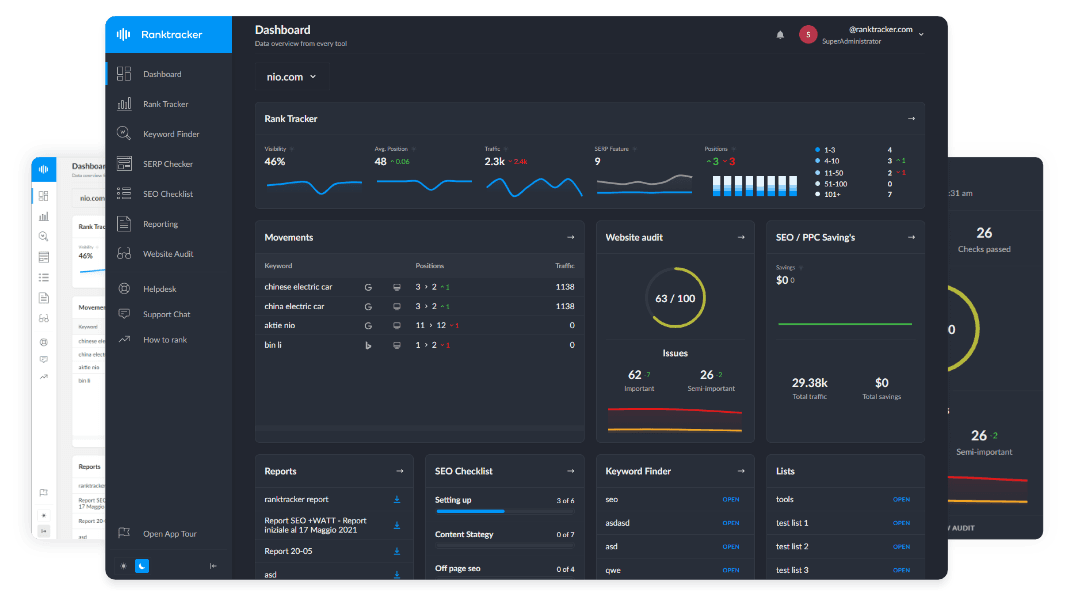Intro
Let’s go on a short walk through time. Can you remember the days spent in school chairs in front of a blackboard, while the teacher went on and on about a lesson you neither understood nor found interesting? But then, a couple of times a week, there’s that one favorite class where the teacher isn’t just throwing information at you but instead asks questions, creates games and quizzes, and makes the lesson feel not only more important and memorable but also fun. That kind of lesson was interactive, and today, the same psychology is applied in web design through what is called interactive storytelling.
With countless websites and an overwhelming amount of information in recent years, standing out creatively has become imperative for even capturing an audience's attention, let alone driving action. Incorporation of interactive elements such as interactive graphics, videos, and animations is now expected by users as opposed to traditional static content. If you’re curious which metrics to track to see the uplift in engagement, take a look at our deep dive into user engagement signals that influence Google rankings.
Interactive storytelling is becoming more and more effective in getting users to engage, and seeing how things are going with the development of AI, it will only evolve from this point onwards. It is therefore high time you find out everything you can about it, and this article is a fundamental starting point.
The Role of Storytelling in User Engagement
Stories are a part of our life from its very beginning and bedtime fairytales – it’s natural for us as human beings to be curious and to feel the need to be entertained. Narrative-driven UX design elements done right are more likely to form a deeper connection between brands and users than a static website merely providing essential information. Users want to be intrigued, and storytelling is needed to accomplish this because it provides a human touch to your website.
If we go back to school once again and remember Aristotle’s three-act structure of a plot, we are reminded of a setup, confrontation, and resolution. This meant that for something to be considered a story, it needed to have a beginning, middle, and end. This structure is applied to websites and product designs, aiming to provide a structured journey for the users.
Web design utilizing intuitive navigation leads a visitor from the introduction of the homepage through emotional experiences such as surprises and excitement in the journey to the powerful CTA resolution. All of today’s most-known use storytelling to some extent, be it Nike making its products symbols of perseverance through narratives of athletes overcoming challenges, Netflix using personalized recommendations to deepen user engagement, or Duolingo gamifying learning with character-driven storytelling. Unlike static content, which users often skim and forget, storytelling captivates attention, fosters emotional investment, and makes a brand more memorable.
What Do The Statistics Say?
The power of interactive storytelling is not a logical assumption, the evidence backs it up strongly. A survey conducted by Sprout Social over 1000 US consumers showed that 64% wanted brands to emotionally connect with them, while a Headstream survey of 2000 UK adults revealed that 15% would make an immediate purchase if they really loved a brand’s story.
Storytelling was reported to increase conversion rates by up to 30%, and as many researchers proved Bryan Eisenberg’s quote “facts tell, stories sell” true, an interesting example is Chris Haddad’s case study on storytelling and conversions. Using stories on the landing page of his product, he got his conversions up 400%. His product being an informational teaching of women on how to find their perfect match, it is no wonder his conversion rates went wild once he included his personal story of how his wife won him over.
The All-in-One Platform for Effective SEO
Behind every successful business is a strong SEO campaign. But with countless optimization tools and techniques out there to choose from, it can be hard to know where to start. Well, fear no more, cause I've got just the thing to help. Presenting the Ranktracker all-in-one platform for effective SEO
We have finally opened registration to Ranktracker absolutely free!
Create a free accountOr Sign in using your credentials
What converts is entertaining and awakening** interest**, curiosity, and emotional connection, not only giving information.
Interactive Design Elements That Drive Engagement
Now that we’re on the same page on how interactive elements are way more engaging than static websites, it’s time to uncover which design techniques exactly proved best for driving engagement. For professional execution of animations, quizzes, and personalized journeys, many turn to UI/UX design services to bring these ideas to life.
Dynamic Animations
It doesn’t always have to be something big, you don’t always need to make your whole website interactive and immersive, it all depends on your goals, your industry, and your audience. Sometimes, it’s enough to include smooth transitions, hover effects, and micro-interactions, such as buttons changing color on hover or animated loading screens. However, it’s important to keep these elements in accordance with the overall design and branding for a positive user experience.
Interactive Content
What is meant by interactive content specifically is quizzes, polls, product configurations, and scroll-triggered animations that respond to user actions. These will most likely get your users to stay around and remain interested longer, but make sure it makes sense for your brand to include something like this in the digital journey. For more on how responsive layouts and interactions boost those numbers, check out our post on the impact of responsive design on user engagement.
Personalized User Journeys
To personalize your audience’s experience, utilize AI-driven recommendations, adaptive storytelling, or interactive onboarding experiences. In this way, your users will feel seen and heard, as if someone’s right there with them – you’re turning them from mere visitors into house guests with a welcoming host.
Balance Creativity With Usability
Rather than passively consuming the content, all of these elements enable users to interact with it in one way or another, thus making them feel more involved. This feeling translates into increased time on the website and conversion boosts.
However, it’s all conditioned to balancing usability – creative elements should not disrupt intuitive user flow or slow down loading times. Last but not least, interactive elements must be accessible to all users if they’re to drive engagement – make sure they’re functional for everyone using assistive technologies.
Don’t Forget to Track The Metrics
You don’t have to do anything in vain or wander in the dark these days – use user engagement metrics to identify what would work best for your audience. You can start small like using different emotional advertising or quiz email campaigns, and then utilize the metrics to optimize emotional engagement in web design itself.
Real-World Examples And Case Studies
Let’s take a look at 3 successful interactive storytelling examples of website designs to elaborate on what interactive features they implemented and what they led to.
Light Factory
Light Factory's website takes a visitor through an immersive experience effectively showcasing the agency's dynamic team and creative projects. The homepage features a looping video header that can’t help but engage, and interactive elements, such as moving shapes and hover-activated video thumbnails, add vitality to the site.
Strategic use of negative space guides attention to key sections without detracting from the main content. The "Services" section transitions to a white background, creating a visual contrast and thus emphasizing Light Factory's offerings. These deliberate design choices, coupled with clear and concise calls to action, punctuate the narrative and encourage user engagement.
Captions
The Captions website maintains a cohesive and immersive visual theme by centering the experience around a single character. As you scroll, she remains a constant presence, creating a smooth narrative flow and adding a personal touch to the design. The background dynamically shifts, transitioning from before-and-after content transformations to a smartphone interface, demonstrating how Captions' AI tools enhance the content creation process.
They also have strategically placed copy complementing these visuals and emphasizing key features such as real-time editing and multilingual support. Information is revealed progressively, keeping visitors engaged and encouraging them to explore further. Toward the end, data-driven insights reinforce credibility, while a well-placed call to action neatly concludes the journey, prompting users to take the next step.
My Developer Journey
Bruno Santo’s website takes us on a nostalgic 8-bit adventure upon landing, telling his story as a developer through a horizontal scrolling experience reminiscent of classic video games. The pixelated visuals and playful design make exploring his portfolio feel like a journey rather than a basic website visit.
His creative interactive elements invite visitors to engage, such as a “Skills” icon that smoothly leads to a showcase of his programming expertise. This immersive approach replaces traditional navigation menus with a more engaging, hands-on experience. The site stands out as a unique and memorable take on a developer portfolio because it successfully blends creativity with technical skills in a unique way.
Bring Your Story to Life
If your goal is to improve user engagement, create memorable experiences, and drive meaningful interactions, PopArt Studio can help you harness the power of interactive storytelling. From interactive narratives to storytelling games, the conclusion is clear as a bell: interactive digital storytelling turns passive browsing into an immersive virtual experience.
While integrating thoughtful design elements, designers should focus on balancing creativity with usability so that scroll-triggered animations and interactive content add value rather than distraction. For more inspiration on how brands are leveraging storytelling in digital experiences, see how innovative web development enhances performance and user engagement.
This is the time to think outside of the box and experiment – try different techniques, test user responses, and refine your approach. Whether you include a small interactive feature or a fully immersive journey, every step toward a more engaging experience makes a difference. Be the favorite teacher.

